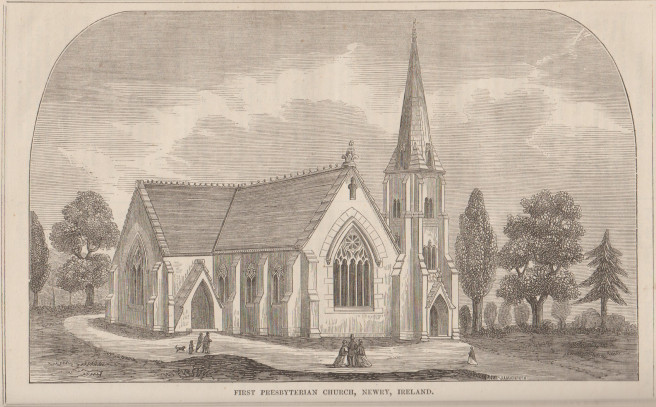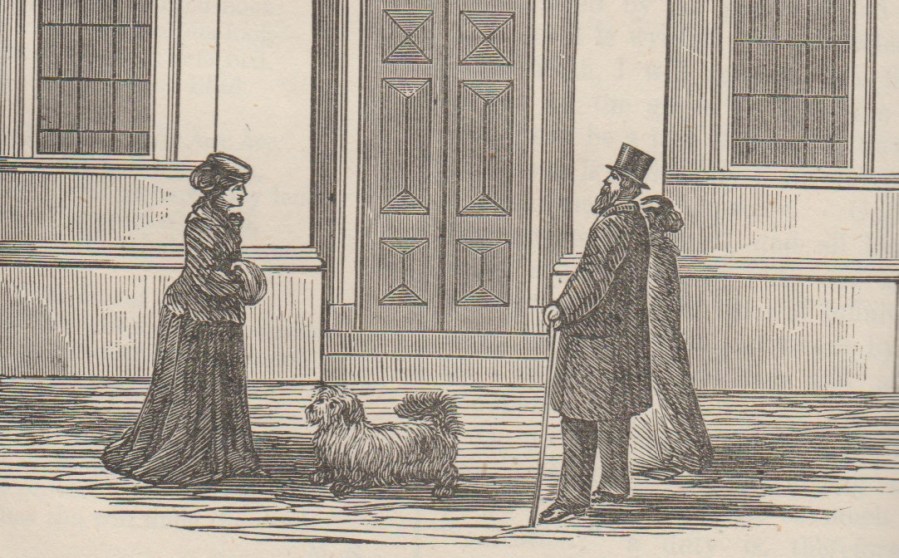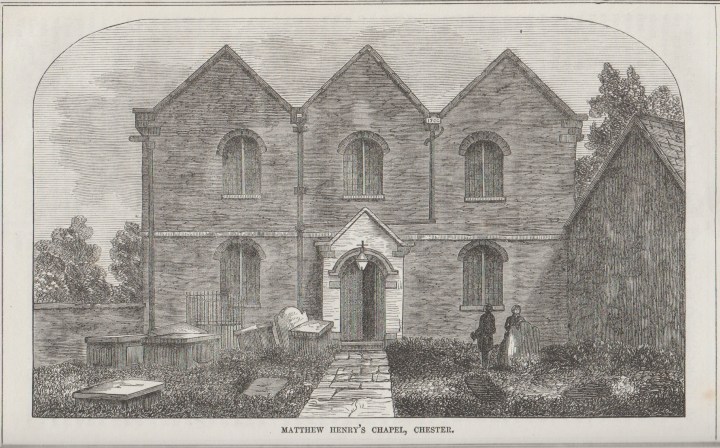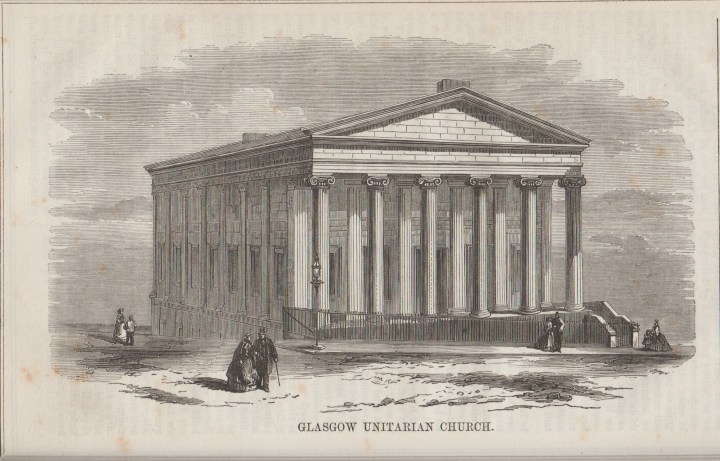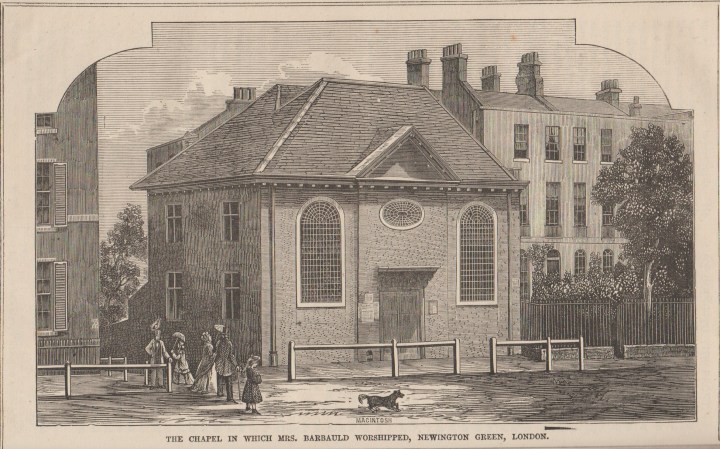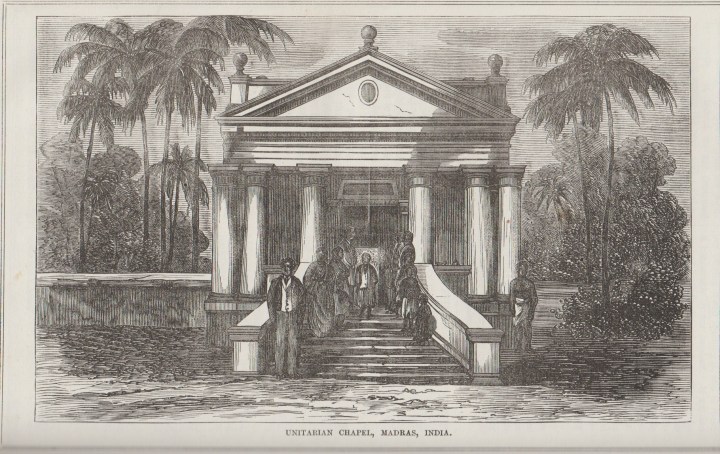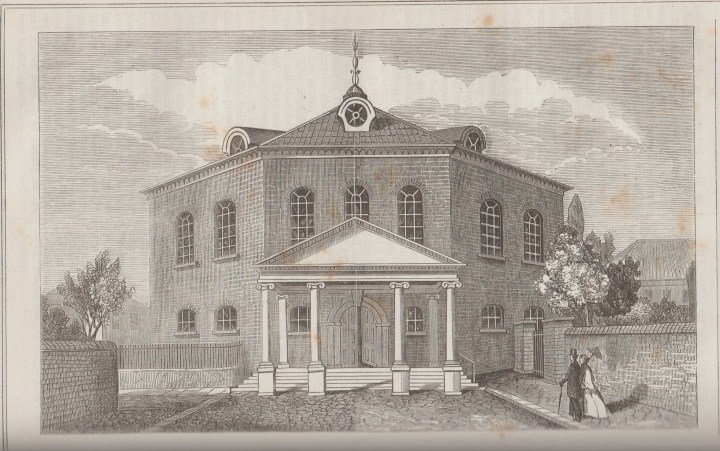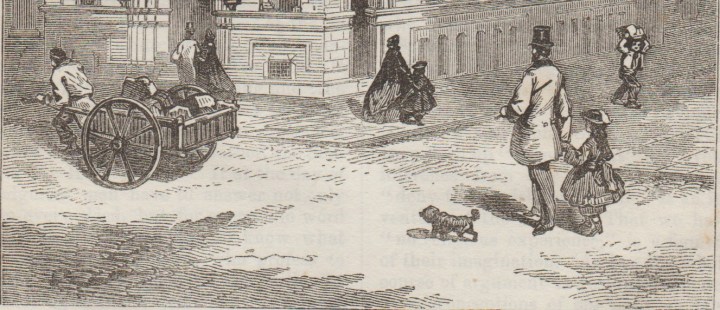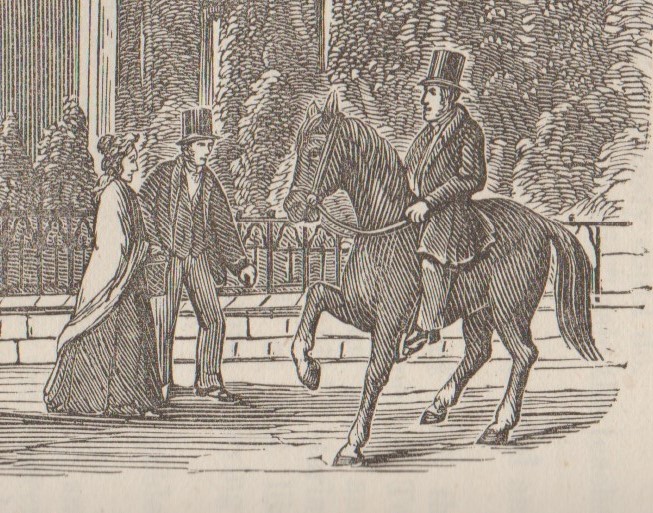At the end of February a meeting of the Presbyterian Historical Society took place at the First Presbyterian (Non-Subscribing) Church, Newry when the speaker was the Rev Dr John Nelson who spoke about the life and ministry of Rev Andrew George Malcom, minister at Newry from 1809 to 1823.

Rev Dr John Nelson addresses the Society
It is always an interesting church to visit, said to be one of the first Presbyterian churches in Ireland to adopt the Gothic style, designed by W.J. Barre in 1853, the first commission of the Newry-born architect then aged just 22. It was my task to introduce the speaker and I also made mention of the magnificent organ built in Belfast in 1806 for the Second Congregation, first played by Edward Bunting and sold to the Newry congregation in the 1920s. It was one of the first organs to be introduced to any dissenting congregation in Ireland and undoubtedly is the organ in longest continuous use in any Presbyterian church in Ireland. The Very Rev John Dunlop asked if there was any chance of hearing the instrument being played and church member Florence Berry kindly stepped up to give everyone the chance to hear it.

Florence Berry plays the organ
I have an example of a postcard of the interior of All Souls’ Church, Belfast which includes a partial view of the instrument in what was its second location:
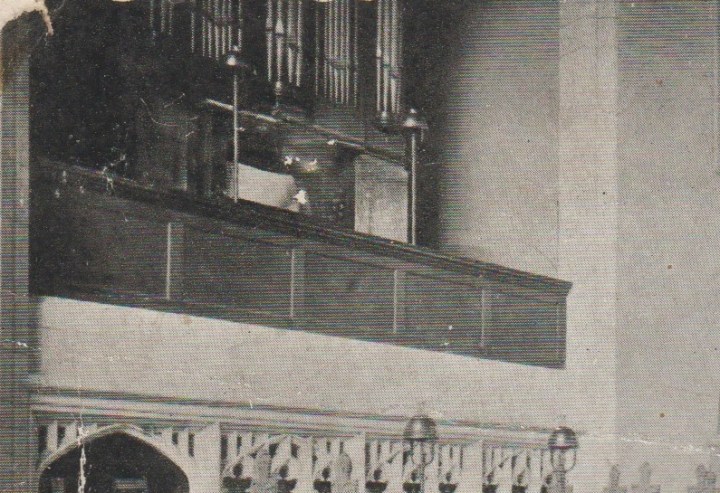
I have blogged about this postcard and the ‘ghost’ in the picture in a previous post – Postcards from All Souls’.
By chance I recently became the proud possessor of an Edwardian postcard featuring the Newry church.
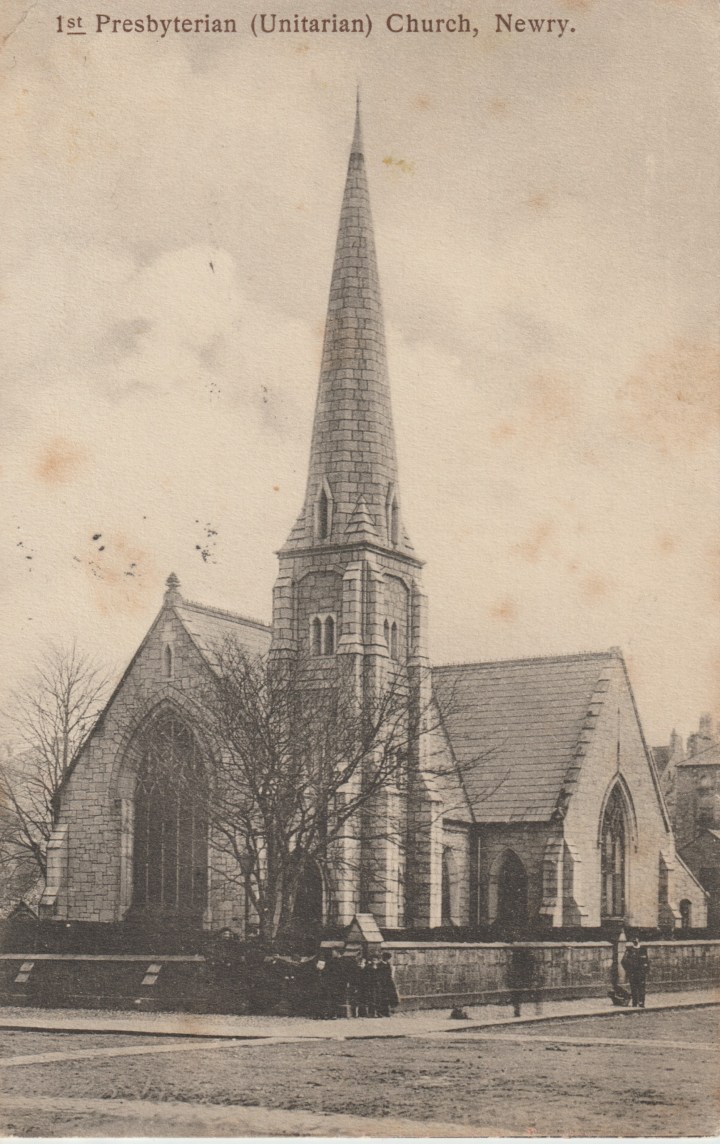
The card was posted in Newry on 12th August 1905 by ‘May’ to ‘Mr A.N. Jackson, 17 Scholar Street, Liverpool’. She said simply ‘This is a picture of our Church.’
I only know of eight or nine Non-Subscribing Presbyterian churches which appear on postcards, although there are other oddities such as a postcard featuring the Newry manse from this era, although I don’t have a copy of it. The Newry card of the church is not particularly rare and this is not a wonderful example, bearing, as it does, a fair amount of foxing. But it is interesting nevertheless, complete with a knot of school age children standing at the corner of the road.
Closer inspection reveals that this little crowd might contain some of the Sunday School as the solitary figure a bit further to the right appears to be a clergyman. Since we can date this exactly to 1905 this would be the Rev George Vance Crook. After serving as a Wesleyan Methodist minister he changed denomination and ministered successively at the Unitarian Church, Taunton, then at Newry and Warrenpoint, then Cork and finally at Antrim where he had a long ministry from 1913 until his death in 1949. He had a kindly disposition and although in many ways a figure from the distant past in my first ministry in Belfast one member of the congregation could recall him very well from his Antrim days.
I took a picture of the exterior, complete with scaffolding, a couple of years ago:
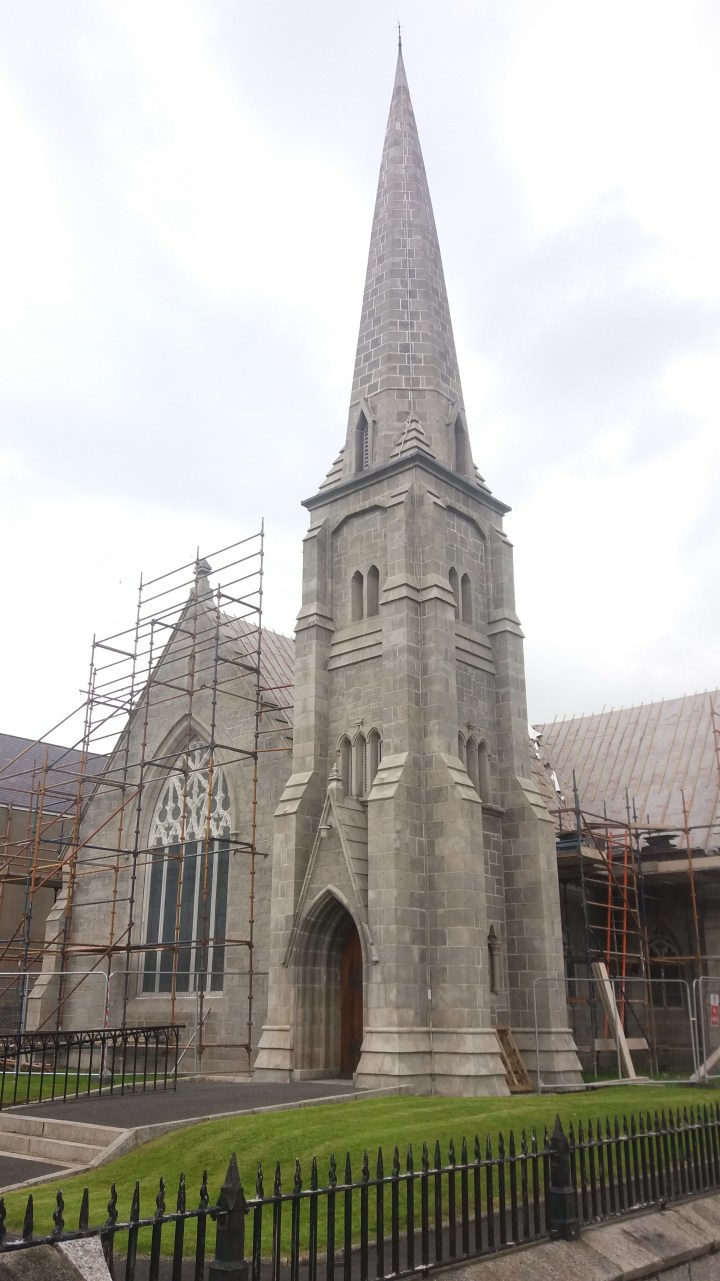
An engraving of the church appears in an 1866 edition of The Christian Freeman, later also reproduced in Emily Sharpe’s 1901 Pictures of Unitarian Churches, one of only three Irish churches to appear there. It is reproduced at the top of this page.
One of the things that always catches the eye at Newry is the large model of a steam engine and its coach mounted high on the wall of the church hall. It was made by Mr Henning a church member who worked as a wheelwright in Newry railway station and who died in 1930. He bequeathed his model to the Newry Sunday School and it has been in the church hall ever since.

